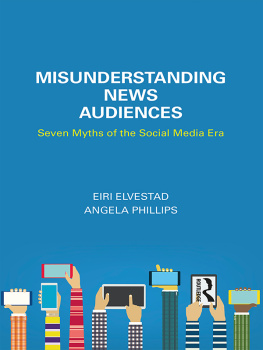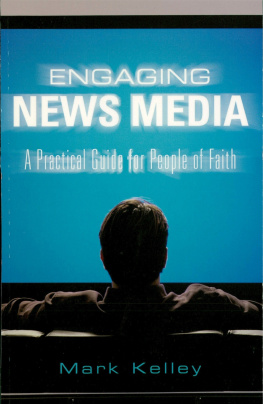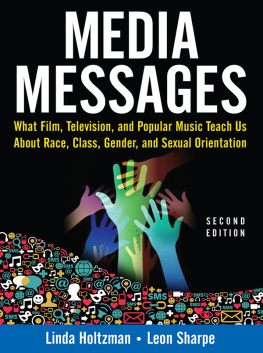2020 by University Press of Colorado
Published by Utah State University Press
An imprint of University Press of Colorado
245 Century Circle, Suite 202
Louisville, Colorado 80027
All rights reserved

The University Press of Colorado is a proud member of the Association of University Presses.
The University Press of Colorado is a cooperative publishing enterprise supported, in part, by Adams State University, Colorado State University, Fort Lewis College, Metropolitan State University of Denver, Regis University, University of Colorado, University of Northern Colorado, University of Wyoming, Utah State University, and Western Colorado University.
ISBN: 978-1-60732-989-3 (paperback)
ISBN: 978-1-60732-990-9 (ebook)
https://doi.org/10.7330/9781607329909
Library of Congress Cataloging-in-Publication Data
Names: Kelley, Greg, 1960 author.
Title: Unruly audience : folk interventions in popular media / Greg Kelley.
Description: Logan : Utah State University Press, [2020] | Includes bibliographical references and index.
Identifiers: LCCN 2020008853 (print) | LCCN 2020008854 (ebook) | ISBN 9781607329893 (paperback) | ISBN 9781607329909 (ebook)
Subjects: LCSH: Folklore.
Classification: LCC GR67 .K45 2020 (print) | LCC GR67 (ebook) | DDC 398.2dc23
LC record available at https://lccn.loc.gov/2020008853
LC ebook record available at https://lccn.loc.gov/2020008854
Cover art: I Dont Believe in Fairy Tales by street artist TRUST. iCON, first appearing in Bethnal Green, East London, 2015. Permission of use and original photo courtesy of the artist.
T HIS PROJECT UNFOLDED AS A SERIES OF DISCOVERIES about the wonderfully creative world of disruption, about the myriad ways that active audiences assert themselves to undermine, refashion, expand, or otherwise fracture the messages of popular media. Along that path, a number of good-hearted people provided me with resources, inspiration, and encouragement.
Vital portions of the research were made possible by the Faculty Research Fund at the University of Guelph-Humber. I wish to thank George Bragues specifically for supervising that fund and John Walsh for the administrations ongoing support of faculty research and professional development. Thanks go to the Rollins family and Angele Nunez, manager of operations at Jamaicas Rose Hall Great House, who facilitated my research by granting liberal access to tours and plantation grounds. I am particularly grateful to Doug Prout, artistic director of the interactive nighttime tour at Rose Hall, for graciously agreeing to an interview and for kind allowances as I recorded and studied his theatrical production. I extend my thanks also to Jonny Davies at the special collections of the British Film Institute and the staff of the BFI Reuben Library for access to materials housed there. The cover art I Dont Believe in Fairy Tales appears by generous consent of UK street artist TRUST. iCON, to whom I am deeply obliged.
Through the full span of the project, Sue Hunter and Roland Vila of Library Services at Guelph-Humber graciously lent their reference-sleuthing skills in helping me track down esoteric sources. And the kind collaboration of my colleague and friend Marc Tavares, media technologies specialist at Guelph-Humber, has been boundlessly helpful. Further, I am lucky to have worked with two very capable research assistants: Curtis Nelson, who deftly handled all the digital details of our fieldwork at Rose Hall, and Cal Campos, whose careful transcription and editing skills served us well at the BFI archive, making the most of our limited research time there.
Iterations of this work were presented at meetings of the American Folklore Society and the Folklore Studies Association of Canada. I am grateful to participants and panelists at those meetings for their comments and suggestions as I worked through the ideas that shaped the arc of the book. Earlier versions of chapters 1 and 6 have appeared previously in print (Kelley 2012, 2015, respectively). I also thank the editors at Utah State University PressMichael Spooner, Rachael Levay, and Laura Furneyfor their direction and kind encouragement throughout. And Robin DuBlancs exceptional copyediting in the final stages was a godsend.
I benefited immeasurably from the insights and support of friends who have inspired my work: Ray Cashman, Charlie Doyle, Michael Evans, Michael Dylan Foster, Henry Glassie, Bill Hansen, Wolfgang Mieder, Tom Mould, Elliot Oring, and Pravina Shukla. Many fruitful conversations with other friends and colleagues have proved instrumental in the ferment of this book, memorably with Kristie Andrews, Ron Baker, Simon Bronner, Jan Brunvand, Eric Eliason, Bill Ellis, Natalie Evans, Diane Goldstein, Brian Huss, Mikel Koven, Janet Langlois, John Laudun, Jim Leary, Carl Lindahl, Moira Marsh, Jay Mechling, Adam Miller, Danny OQuinn, Jill Terry Rudy, Jeannie Banks Thomas, Tok Thompson, Libby Tucker, Tad Tuleja, Rory Turner, Kathy Ullyott, and Theresa Vaughan. All the while, David and Maxine Schacker have been kindly supportive.
In the time that I have written this book, both of my parents passed away. In the face of that heavy loss, the bond with my brothers (Harry, Bryant, and Eric) and their partners (Judy, Jennifer, and Dawn) remains close as ever. They are individuals of complexity and character, and my shared history with them is an inspiriting presence in my life and work.
Foremost, I am thankful for the abiding support of my partner and best friend Jennifer Schacker, whose helpful advice and loving encouragement sustained me through the long process of research and writing, from beginning to end, even as we worked together to establishwith Jax Mill, Chloe Mill, and Frida Kelleya compassionate and cheerfully offbeat household.
Reception and Resistance
W HEN I WAS A LITTLE BOY, A BLOCKY Zenith brand TV the size and weight of a bank safe graced our family living room. There, after school and on weekends, my three brothers and I would sitor lounge with pillows on the crimson shag carpetwatching programs like The Addams Family, The Brady Bunch, and Get Smart. This was long before the convenient affordances of remote controls, home recording, and on-demand viewing: we were captivethough not always captivatedmedia consumers who had no choice but to endure the frequent commercial interruptions to our favorite programs, which at the time we reckoned as an endless nuisance. So together we devised a game to mitigate the boredom. When a commercial flickered onto the screen, one of us would extract himself from his comfortable nest and turn down the TV volume (a task that usually fell to me, as the youngest), and then we would all collaborate to create spontaneously our own sardonic content to the advertisements. Often we slipped quickly into irreverent, distasteful, or subversive themes. I recall that contamination was a common leitmotif: a handsome fellow shaving at the bathroom mirror was, by the alchemy of our invention, inexplicably slathering mayonnaise onto his face; a married couple at the breakfast table gleefully sipped murky motor oil, not coffee; aerosol room fresheners were reimagined as fire extinguishers, mouthwash as kerosene, liquid floor wax as accidental urination on the kitchen floor, and so on. We replaced the existing narration and dialogue of the commercials with our own voice-overs and we adapted the visuals to scenarios that veered inevitably toward the ridiculous. I recall an instance when one brother chimed in with an extemporaneous voice-over for a sugarless gum commercial. He exaggerated the deep-toned inflection of a professional announcer, trumpeting: People who chew Trident gum have 20 percent fewer cavities... because they have 40 percent fewer teeth. The game became a regular part of our family folklore and something of a contest as we all jockeyed for the honor of getting off the next best gag or one-liner, each of us trying to match wits with the otherand laughing all the while. Sometimes we were disappointed when the regularly scheduled program resumed, bringing our improvised fun to a sudden halt. In fact, on occasion, when we were particularly engaged with it, the game continued right into the program itself. And so our afternoon TV time was not just passive viewing; rather, it was spontaneously creative and immersive as we interacted purposely with the network programming and its interspersed ads. At the time I did not comprehend the notion of brandwashing (Lindstrom 2011) or corporate control, nor did I recognize the ludic routines with my brothers as interventions against the onslaught. But those early games disrupting commercials may have set me in the direction of musing on the relationship between dominant media and disorderly audience receptionwhat has been a long pathway leading to this volume and its central focus on folk intervention in popular media.








 The University Press of Colorado is a proud member of the Association of University Presses.
The University Press of Colorado is a proud member of the Association of University Presses.